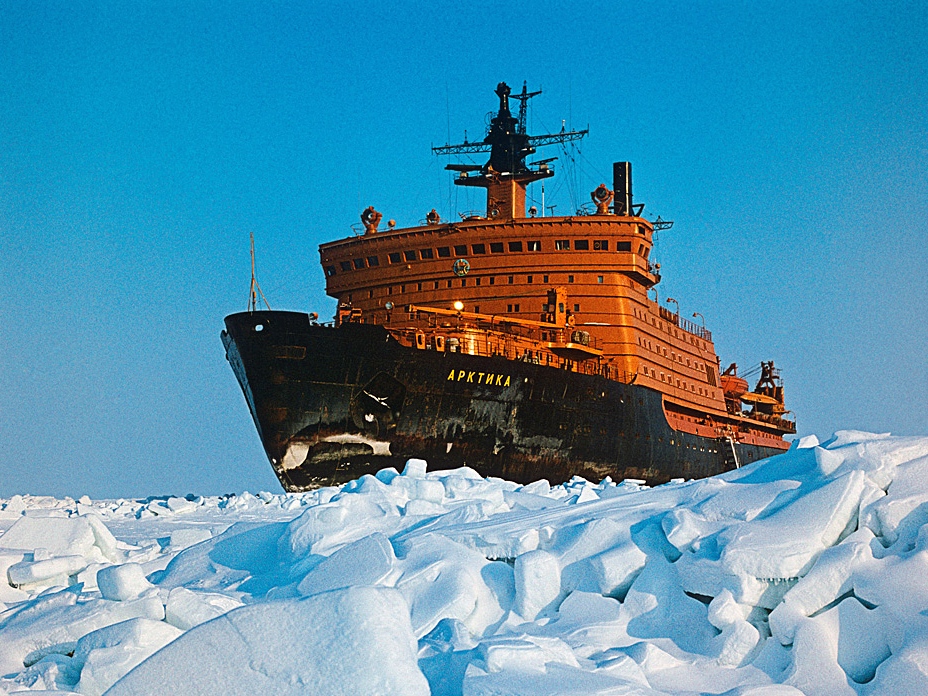
UN ban on heavy fuel oil in the Arctic come into effect
But it’s unlikely to impact emissions from shipping along the Northern Sea Route.
News

Publish date: April 2, 2018
News
Russia’s nuclear icebreaker fleet has announced it will dismantle one of its star players, the Soviet-era behemoth the Arktika, a record-setting vessel against which all other icebreaker achievements have been measured since the ship took to water in 1975.
The announcement, which came at a Murmansk meeting of the Public Council for the Safe Use of Nuclear Energy last week, marks the second major dismantlement project of a nuclear icebreaker that Russia has undertaken, the first of which is the Sibir icebreaker, which is expected to be completed before before the Arktika is disassembled at the Nerpa shipyard.
Both of the older vessels will be replaced by two larger icebreakers that will bear their names, the hulls of which have been floated at the Baltic Shipyard in St Petersburg. The new Arktika is expected to be commissioned in 2019, followed by the new Sibir in 2021, and they are part of a broad Kremlin push to keep the Arctic’s storied Northern Sea Route clear of ice all year round.
 The Sibir icebreaker at the Atomflot port.
Credit: Anna Kireeva
The Sibir icebreaker at the Atomflot port.
Credit: Anna Kireeva
But Moscow’s designs on commercially colonizing the Arctic are undisputed. A second natural gas field is expected to open on the lucrative Yamal Peninsula in the years to come and Rosatom, Russia’s state nuclear corporation, has been given the mandate of developing Arctic infrastructure – and with it a bloom in atomic-powered icebreaking steel.
Still, last week’s announcement of plans to dismantle the Arktika, which has been moored since 2008 at the Atomflot nuclear icebreaker port in Murmansk, is sure to strike a chord of nostalgia among aficionados of Soviet seafaring glory.
The Arktika was the lead vessel in a class of the same name, which included which included the Sibir, the Rossiya, the Sovietsky Soyuz and the Yamal, all but one of which are now retired. Its two reactors were designed to propel its 22,920 tons through ice up to five meters thick.
 The Arktika nuclear icebreaker, which is soon slated for dismantlement.
Credit: Wikipedia
The Arktika nuclear icebreaker, which is soon slated for dismantlement.
Credit: Wikipedia
In 1982, following its leader’s death, the Central Committee of the Communist Party ordered the name of the vessel changed from the Arktika to the Leonid Brezhnev, the famously droning and absent-minded Soviet Premier who hung onto power for 18 years.
But the crew of the Arktika decided it had had enough of him as well and refused to abide by the name change. In 1986, they staged a week-long strike while at sea to make their displeasure known, and refused to answer radio calls if the vessel were referred to by the name of the bushy-browed leader. That same year, the vessel was rechristened with its original name.
After it was retired in 2008, the Arktika’s operational lifetime was used by the Russian nuclear industry to buttress its controversial argument for reactor run-time extensions. Originally designed to run for 100,000 hours, the vessel’s reactors received two extensions, prolonging their lives to 175,000 hours. Atomflot has run most of its icebreakers for extended periods ever since, and last month, the Vaygach nuclear icebreaker surpassed the Arkitka’s record by logging 177,205 hours on its reactors.
So far, it hasn’t been determined precisely when the Arktika will be dismantled. According to Oleg Khayutin, deputy chief engineer at the Nerpa shipyard, the dismantlement of the Sibir has to be completed first – which he projected would occur by May.
He provided the gathering with a technical outline of the project, saying that the Artika’s reactors would be removed first, prior to taking apart the rest of the vessel, and that it will subsequently be stored at Saida Bay alongside the reactor from the Sibir.
As dismantling the Sibir was Russia’s first-ever nuclear icebreaker deconstruction process, Khayutin said it presented a number of difficulties that required improvisation, which will be instructive on future dismantlement projects.

But it’s unlikely to impact emissions from shipping along the Northern Sea Route.

In this news digest, we monitor events that impact the environment in the Russian Arctic. Our focus lies in identifying the factors that contribute to pollution and climate change.

The following op-ed, written by Bellona’s Charles Digges, originally appeared in The Moscow Times. In recent months, the Russian nuclear in...

The aquaculture industry should play a central role in the future food system. And to achieve that, significant challenges must be overcome," says Kari Torp, senior advisor for aquaculture at Bellona.